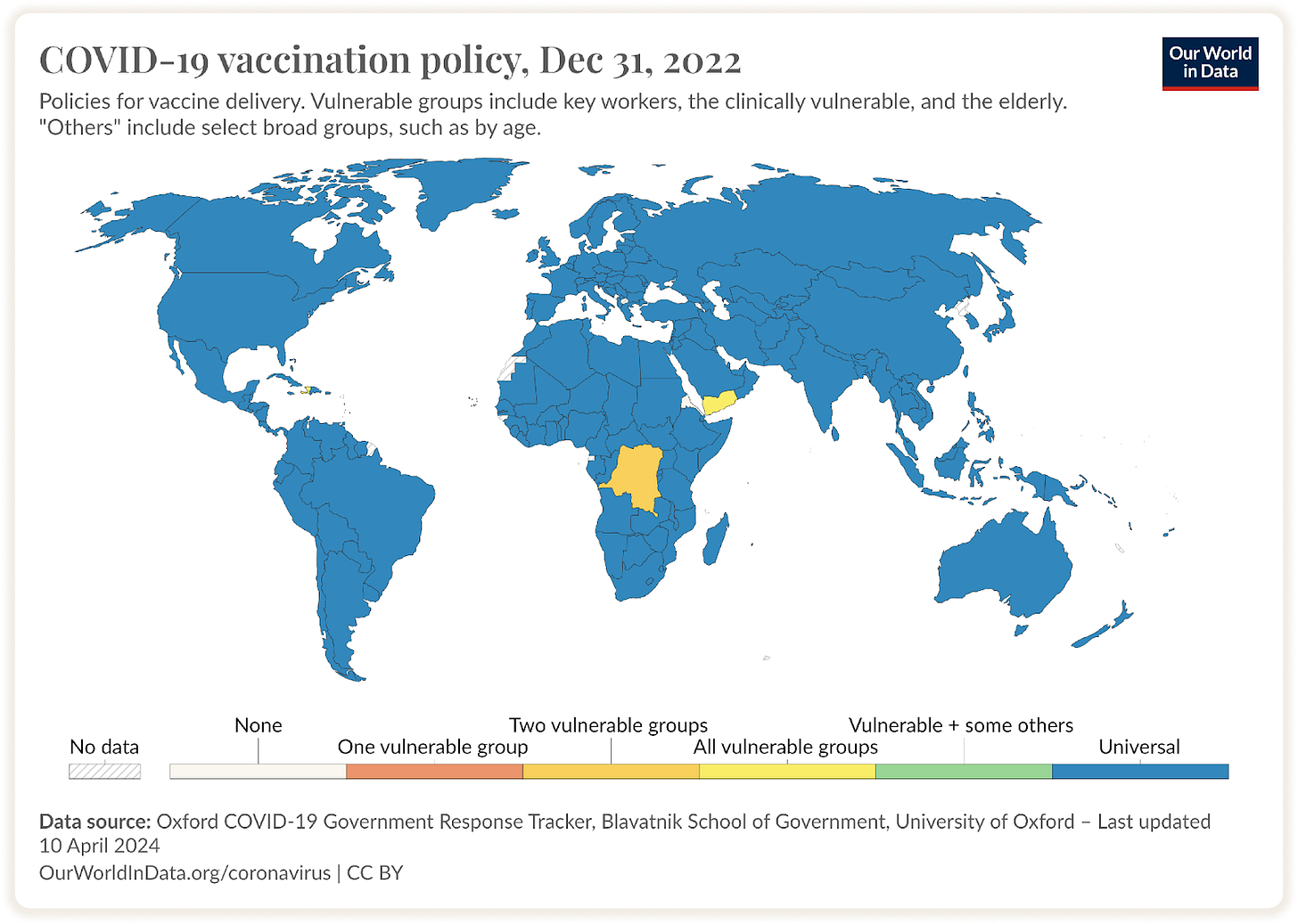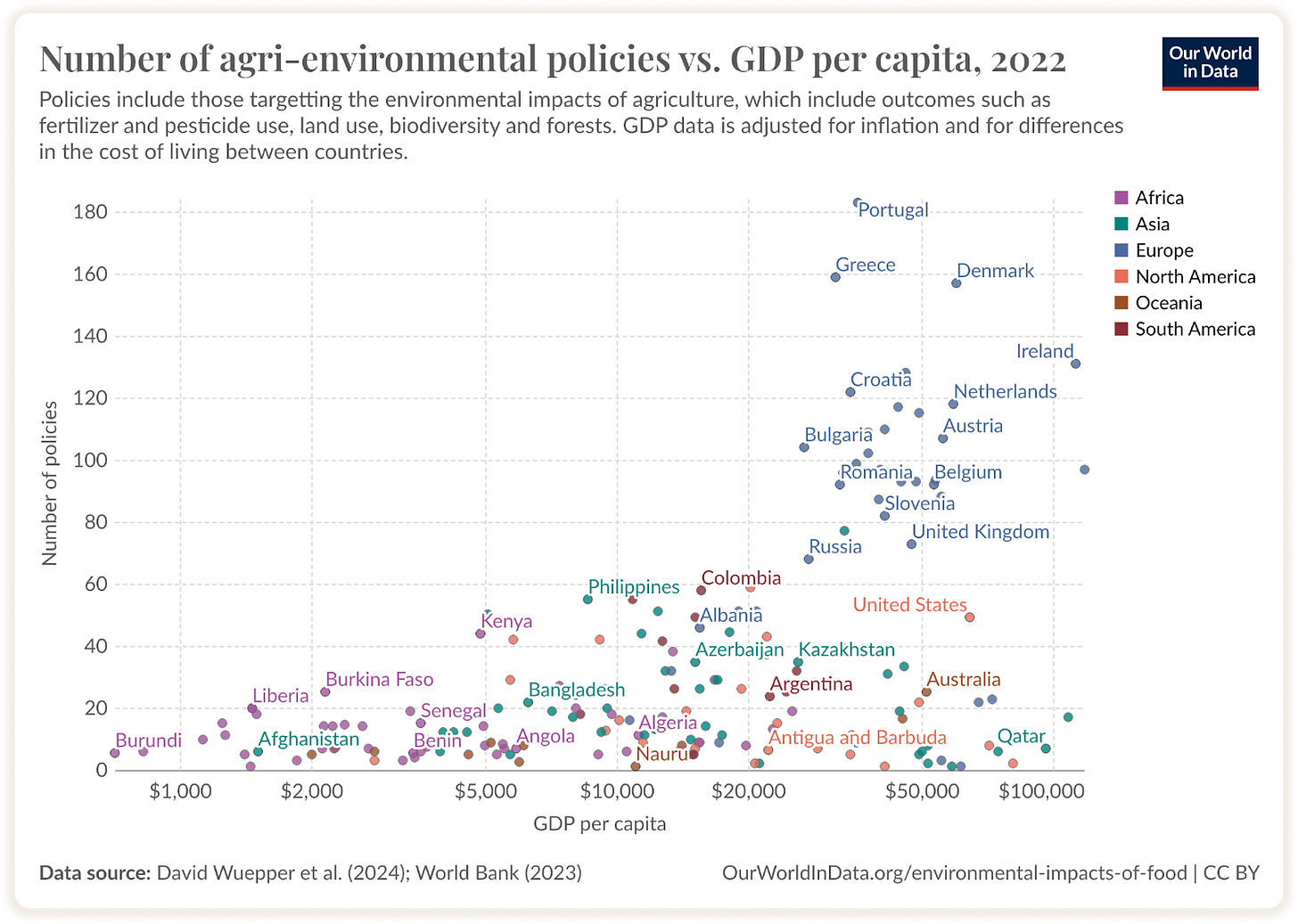We live in an interregnum; the Pax Americana is over, and powers like Russia, Iran, and China seek a multipolar world through violent means. A sweeping Polycrisis is precipitating the end of the post-WW2 system. The Fifth Estate, enabling individual, collective, and planetary coordination, offers a way out of this transition to a new order.
Outline
3.1. The Licklider Scale of Civilizational Advancement
3.2. The Interregnum
3.3. The Polycrisis
3.3.a. Plague
3.3.b. The Spiral
3.4. How the Old Order Solves the Interregnum
3.5. How the Fifth Estate Solves the Interregnum
3.5.a. Decentralization, Subsidiarity, Voice, and Agency
3.1. The Licklider Scale of Civilizational Advancement
In 1963, J.C.R. Licklider, who served as the first director of the Information Processing Techniques Office (IPTO) within ARPA, wrote a memo1 emphatically addressed to “Members and Affiliates of the Intergalactic Computer Network”. The memo itself was a rather vague, yet still visionary call to connect several dispersed researchers via a computing network—the nugget that would eventually give birth to ARPANET, the Internet’s predecessor.
Figure 9: J.C.R. Licklider (pictured on the left) envisioned, then unleashed our modern era of computing. ‘The Dream Machine’ is a great account of his accomplishments.
Beyond the tongue in cheek title of the memo, Licklider was known to characterize his vision for the eventual Internet as exactly this: an Intergalactic Computer Network. Colleagues recall Licklider talking of such a network as an “electronic commons open to all…the main and essential medium of informational interaction for governments, institutions, corporations, and individuals”. Needless to say, if Licklider were alive today to contrast his vision with what the Internet has failed to become, disappointment would not begin to describe his feelings.
It is custom in tech and science fiction circles to model civilizational sophistication along the Kardashev scale. On this scale, Type I Civilizations are capable of harnessing all the energy of their home planet. A Type II Civilization can harness all the energy of its home star; for Type III, an entire galaxy (billions of stars).
The Kardashev scale is useful to conceptualize technological advancement, but tells us nothing of the sophistication of a civilization’s coordinating technologies. In light of this, and with reference to Lickliders’ intergalactic network, I propose that a Licklider Scale of Civilizational Advancement can help us model such sophistication.
Such a scale would see a Type I civilization develop a planetary computer network. A Type II civilization would have expanded this network to several planets in its star system. A Type III civilization would have scaled this network across the galaxy, and a Type IV civilization would have the power to connect galaxies.
On the Licklider scale, we are barely a Type I civilization. Around 2.6 billion people are still unable to access the Internet. And as has been outlined so far, those 5 billion that make up our current Internet are still just a mass, not the coordinated entity envisioned by the Fifth Estate. Only a deliberate project of legitimizing the Fifth Estate as a new power within the world order will enable this outcome. This project would have been impossible only 10 years ago. But historical events within the last five years alone have opened up a Kairos—a critical moment to act.
3.2. The Interregnum
The defining feature of our time is that we are living during an interregnum between two worlds. The Old Order—the Pax Americana established after WWII—is over. Arthur Herman argues2 that the underlying assumptions which supported the Pax Americana no longer hold. The first assumption was that the U.S. military could protect its allies everywhere around the globe, including using nuclear deterrence as a last resort. The second assumption was that the U.S. economy would always be strong enough to sustain the largest military in history.
None of these are as true in 2024 as they were even in 1980. While the US economy used to be three times as large as the next closest competitors, the rise of China has obsoleted this fact. At the same time, the US military can no longer guarantee protection to its allies, and instead finds itself prioritizing which conflicts to engage: Europe, or Asia? To put things into perspective, Herman quotes a Brookings Institute study which states:
The U.S. military during the Cold War was generally at least 60 percent larger than it is today; in fact, it was more than twice as large during the Vietnam War. Today, being prepared to fight both China and Russia at the same time would likely require a military 25-50 percent larger than today’s (in rough numbers).
While the decline of US power is apparent, Russia (in Ukraine), Iran (in Israel), and China (potentially in Taiwan) are all simultaneously itching to overthrow the Liberal International Order (LIO) in favor of a ‘Multipolar’ world order. Their vision for what such a world will look like still remains unclear, but judging by their example so far, this vision will be painted in blood.
What comes after the LIO is shrouded in obscurity. For the US and its allies, the answer thus far has been to respond blood for blood to its great power foes in anticipation for a decade of extended wars. While the China-Russia-Iran axis is misguided in its project of creative destruction, what it gets right is that not only is Pax Americana not coming back, at worst, it was always bound to be short-lived, or at best, be drastically reformed. This is due to several factors, two of which stand out:
The discovery of a new spatial order (the Network) and the rise of the Fifth Estate we’ve outlined above
The intensifying crisis of governance sweeping across our planet.
3.3. The Polycrisis
Plague
When future historians tell the story of the 21st century, they might begin like this:
The first decade of the 21st century started ominously, with the 9/11 attack, America’s wars of retaliation, and the Global Financial Crisis ending a golden age of prosperity after the fall of the Soviet Union. However, in the 20’s, it was the COVID pandemic which would forever change everything.
The COVID-19 pandemic was an apocalypse in the truest sense: a revelation, from the Greek apokalupsis, meaning to lay bear. That which was revealed was twofold. First, that humanity’s planetary condition was an epochal fact. In 2003, SARS died out on its own. China’s logistics networks and travel infrastructure was still limited. By 2020, the country’s high-speed trains and vibrant air traffic networks set the virus free. It crawled over borders and jumped over walls, spreading fast and uncontrollable.
The second revelation, independent of any discourse about the “science” of it all, concerned the covertly tyrannical nature of the world in which we actually lived. This was a world where the sources of truth meant to bind society were no longer present; where the use of force to generate global medical compliance was now normal; where the complicity and docility of one’s neighbor in cooperating with abjectly authoritarian measures against fellow citizens was praised; where the lockdown of children was tolerated, and where the Fourth Estate was no longer a countervailing force against powerful interests, but rather a passive, if not complicit propaganda arm for the interests of medical agencies and pharmaceutical companies.
Figure 10. Source: Our World in Data.
Figure 11. Source: Our World in Data.
It was a world where the violation of the fundamental sovereignty of the individual was now an accepted norm, and to some, an inevitable outcome of technological planetarization. In short, we had crossed over to the post-liberal era.
The Spiral
The echoes of the COVID revelation are many. In the wake of its destabilizing effects, the world has fallen into an accelerated downward spiral:
Techno-economic competition between nation states, primarily the US and China, has intensified, serving as a cold front for geopolitical conflict
Trust in technocratic organizations and the experts that lead them is declining precipitously3
Americans’ trust in their own government is at an all time low4
The Ukrainian war has revealed the inconsistencies of the Green transition, as countries like Germany have taken to burning coal and shutting down nuclear plants, while the Dutch5 and other European6 elites continue to wage war against their farmers, who are now forging a new political opposition.
The European Union faces increasingly severe push back from the left7 and the right8 all at once
Coup d’etats have reared their heads again in Africa (seven9 in the last four years), where the creation of new states10 and the redrawing of borders is once again on the table
The Middle East is once again on fire11 following the outbreak of a renewed Israel-Palestine conflict
Figure 12. The EU’s war against its agricultural sector in the name of the Green Transition is well above the global norm. Source: Our World in Data.
Figure 13. Left: FDR, victor of WW2, presides over the birth of the Pax Americana. Right: the US military fleeing Afghanistan in shambles in 2021, marking the beginning of the end of Pax Americana.
These fractures are not isolated incidents, but—borrowing the term—one single Polycrisis12: an overall crisis of planetary governance manifested in security, political, economic, technological, and environmental dilemmas.
It is in this world on fire, governed by a seemingly immortal class of undying septuagenarians (8 out of 10 leaders13 of the 10 most populous countries are 70 or older), that the vulnerable young are to mature. Millennials and Gen Z increasingly make up a rising class of the globally impoverished. The advent of technologies such as AI, genetic engineering, automation and potentially inorganic life, all herald more challenges that the current order is ill-equipped to tackle.
Peter Turchin argues that revolutions are the business of talented, but downwardly mobile aspirants. Given that young people make up the ‘power users’ of the Fifth Estate, it is unlikely that a growing number of them would object to bringing about a new paradigm.
3.4. How the Old Order Solves the Interregnum
The international community governs the world through a delicate dance of consensus. This consensus, however, is rarely born of pure agreement. Instead, if it is a Liberal consensus, it is shaped by the United States and its most influential allies; if it is a non-aligned consensus, it is led by China and its BRICS partners. These powerful players set the stage, and then a network of big corporations and significant civil society organizations step in to push the resolutions through the labyrinthine corridors of power. If necessary, UN agencies join the fray, ensuring the consensus weaves its way through the institutional organs of aligned nation states, no matter how distant or diverse. The Paris Agreement is an example of this process in action.
This process, while appearing robust, is deeply flawed. There is no feedback loop, no consultation with the affected constituents who bear the brunt of these decisions. The machinery of planetary governance grinds slowly, making adjustments at a glacial pace. This slowness, this inefficiency, is a stark contrast to the urgency of the Polycrisis.
In the end, this mode of governance is resource-inefficient and delays action. The world watches as diplomats talk, committees deliberate. Problems fester and grow. The lack of rapid, scale sensitive, dynamic responses and the cumbersome nature of decision-making leaves a vacuum where swift action is needed most. But where the technocratic Old Order falters, the Fifth Estate can fill in the gaps.
3.5. How The Fifth Estate Solves the Interregnum
The term “planetary governance” doubtless conjures up images of United Nations technocrats and blue helmets parachuting into random towns to promptly start dictating every facet of one’s life. Given our very recent history of government overreach during the pandemic, this fear is hardly unfounded. Yet the problem remains: the crisis of planetary governance demands a planetary response. This crisis is one of scale and adaptability. It questions at what scale should interventions emerge, with the least amount of coercion and the most amount of competence/dynamism.
As currently constructed, neither nation states nor international bodies like the United Nations or the European Union have shown themselves capable of coordinating at scale on almost any matter of note, whether that be the “green transition”, technology, or international conflict. This leaves a wedge for the Fifth Estate to offer another way.
Decentralization, Subsidiarity, Voice, and Agency
The Network doesn’t just help people say things (voice); it enables them to do things (agency). Voice, historically the most common resort for the governed to display discontent with their leaders, is characterized by communicating grievances through protests or the vote. Exit simply means taking your business elsewhere. In a networked world, Voice and Exit are an old world paradigm; in the new world, it is Voice and Agency, enabled by the Network, which shine.
The Fifth Estate is simultaneously a hyper local system, embodied in the sovereignty of the individual digital citizen and subsidiary network groups—and a planetary system, embodied in the literal Earth-scale Network composed of Fifth Estate members. This allows the Fifth Estate to decentralize planetary governance by giving individuals and scale sensitive collectives voice and agency at scale. Instead of waiting for decrees from centralized state organs, for instance, a community can self organize via the Network to move capital, information, and other assets to solve local problems. This kind of cooperation can also happen cross border, enabling Fifth Estate actors from one end of the world to come to the aid of others in different contexts. In other words, the Fifth Estate is a rough manifestation of a ‘world commonwealth', where every person or group is not simply represented, but consulted, and ideally, empowered to act both locally and globally. No world judges, politicians, men with guns, or other central coordinating body needed.
The 18th century Liberal doctrine of representation is ill suited to the Fifth Estate. Instead of simply electing representatives every blue moon, Network Power enables coordinated, ephemeral, scale sensitive groups of citizens to partner directly with the state or international organizations to solve public problems. Again, because networks are increasingly planetary in scale, this mode of governance can also scale across geographies.
This enshrines the principle of Subsidiarity within planetary governance, defined by Siddarth, Allen, and Weyl14 as “empowering people to act decisively within their social contexts, while providing mechanisms of necessary coordination across contexts”.
If built and legitimized as a commonwealth of planetary coordination, the Fifth Estate can exert true political power by actively cooperating with state officials and, when necessary, putting a tremendous amount of pressure on leaders the world over across political, security, and economic issues manifested by the Polycrisis.








